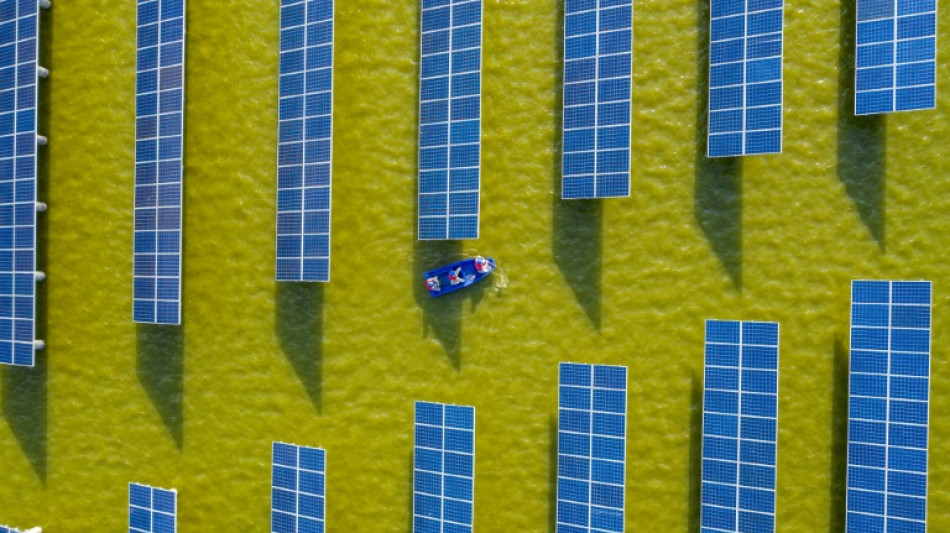
-
 Home from home: Trump showcases his resorts in golf diplomacy
Home from home: Trump showcases his resorts in golf diplomacy
-
EU accuses online giant Temu over sale of 'illegal' products

-
 'No alternative' to two-state solution for Israel, Palestinians
'No alternative' to two-state solution for Israel, Palestinians
-
US plan to destroy contraceptives sparks uproar

-
 Turkey battles wildfires as heatwave grips Med
Turkey battles wildfires as heatwave grips Med
-
Dollar rises on EU-US trade deal but European stocks turn sour

-
 Thai-Cambodia evacuees hail truce news with mixed emotions
Thai-Cambodia evacuees hail truce news with mixed emotions
-
Rivals laud 'phenomenally talented' 12-year-old swim sensation

-
 Major Israeli rights groups brand Gaza campaign 'genocide'
Major Israeli rights groups brand Gaza campaign 'genocide'
-
EU defends Trump trade deal facing backlash

-
 McIntosh wins again at swimming worlds as Yu, 12, just misses out
McIntosh wins again at swimming worlds as Yu, 12, just misses out
-
Trump says Gaza ceasefire 'possible' amid Starmer talks

-
 McIntosh wins second Singapore gold, China prodigy Yu fourth
McIntosh wins second Singapore gold, China prodigy Yu fourth
-
Hunger must never be 'weapon of war': UN chief

-
 Brussels says EU-US deal 'better than trade war' with Trump
Brussels says EU-US deal 'better than trade war' with Trump
-
Three things we learned from Belgian F1 Grand Prix
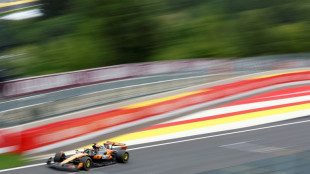
-
 Walsh defies illness in US camp to win butterfly world gold
Walsh defies illness in US camp to win butterfly world gold
-
Qin beats Olympic champ Martinenghi for 100m breaststroke world gold

-
 Ireland's 'economic miracle' at risk from tariffs
Ireland's 'economic miracle' at risk from tariffs
-
Stock markets, dollar rise on EU-US trade deal

-
 England's Lionesses head home to party after Euro glory
England's Lionesses head home to party after Euro glory
-
Philippine flooding centre stage at Marcos state of nation speech

-
 Thailand and Cambodia agree truce after five days of fighting
Thailand and Cambodia agree truce after five days of fighting
-
Israeli settlers attack West Bank Christian village

-
 Food arrives in Gaza after Israel pauses some fighting
Food arrives in Gaza after Israel pauses some fighting
-
Starmer to press Trump on Gaza, trade in Scotland talks

-
 Jamie Overton added to England squad for fifth Test against India
Jamie Overton added to England squad for fifth Test against India
-
China to offer childcare subsidies in bid to boost birth rate
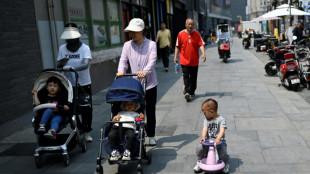
-
 Artists, scientists breathe life into prehistoric woman
Artists, scientists breathe life into prehistoric woman
-
Iconic French chef stakes reputation on vegan menu

-
 CK Hutchison eyes 'major' Chinese investor for Panama ports deal
CK Hutchison eyes 'major' Chinese investor for Panama ports deal
-
England's remarkable Euro 2025 success a triumph for 'incredible' Wiegman

-
 Maduro's party sweeps Venezuela mayoral vote as opposition boycotts
Maduro's party sweeps Venezuela mayoral vote as opposition boycotts
-
Thailand and Cambodia begin truce talks as fighting drags on

-
 Stock markets boosted after EU, US strike trade deal
Stock markets boosted after EU, US strike trade deal
-
Four killed as heavy rain, flooding soaks northern China
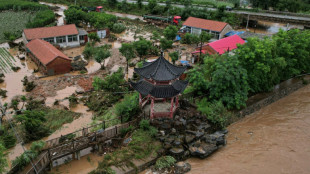
-
 Heineken sees beer sales dip but keeps profit outlook
Heineken sees beer sales dip but keeps profit outlook
-
China's Pan puzzled after shock 200m free exit at swimming worlds

-
 Honkytonk Kenya: Africa's home of country music
Honkytonk Kenya: Africa's home of country music
-
Head of China's Shaolin Temple removed over embezzlement claims

-
 Tunisia plastic collectors spread as economic, migration woes deepen
Tunisia plastic collectors spread as economic, migration woes deepen
-
China's birthplace of kung fu rocked by embezzlement probe

-
 Europe hopes for 'no surprises' as US weighs force withdrawals
Europe hopes for 'no surprises' as US weighs force withdrawals
-
France's long wait for Tour winner goes on but Thevenet sees hope

-
 Most markets rise, euro boosted after EU strikes US trade deal
Most markets rise, euro boosted after EU strikes US trade deal
-
US tariff tussles stuff of nightmares for Bordeaux winemakers

-
 Taiwan's garbage trucks offer classical music and a catch-up
Taiwan's garbage trucks offer classical music and a catch-up
-
Thailand and Cambodia truce talks due but strikes continue

-
 De Minaur battles to DC Open crown
De Minaur battles to DC Open crown
-
US-China set to meet with extension of tariff pause on the cards
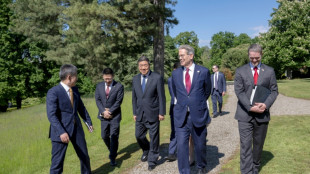
| RBGPF | 0% | 75 | $ | |
| NGG | -1.05% | 71.4 | $ | |
| JRI | -0.08% | 13.08 | $ | |
| BCE | -0.27% | 24.135 | $ | |
| CMSC | 0.21% | 22.532 | $ | |
| BCC | -0.73% | 87.5 | $ | |
| RELX | -1.07% | 52.17 | $ | |
| RIO | -1.77% | 62 | $ | |
| SCU | 0% | 12.72 | $ | |
| SCS | 0.75% | 10.66 | $ | |
| VOD | -2.47% | 11.155 | $ | |
| RYCEF | 0.38% | 13.2 | $ | |
| CMSD | 0.09% | 22.91 | $ | |
| GSK | -0.87% | 37.644 | $ | |
| BTI | -0.83% | 51.82 | $ | |
| BP | 1.33% | 32.633 | $ | |
| AZN | -1.08% | 71.885 | $ |

Cheaper, changing and crucial: the rise of solar power
Generating power from sunlight bouncing off the ground, working at night, even helping to grow strawberries: solar panel technology is evolving fast as costs plummet for a key segment of the world's energy transition.
The International Energy Agency says solar will have to scale up significantly this decade to meet the Paris climate target of limiting temperature rises to 1.5 degrees Celsius above pre-industrial levels.
The good news is that costs have fallen dramatically.
In a report on solutions earlier this year, the Intergovernmental Panel on Climate Change said solar unit costs had dropped 85 percent between 2010 and 2019, while wind fell 55 percent.
"There's some claim that it's the cheapest way humans have ever been able to make electricity at scale," said Gregory Nemet, a professor at the University of Wisconsin–Madison and a lead author on that report.
Experts hope the high fossil fuel prices and fears over energy security caused by Russia's invasion of Ukraine will accelerate the uptake of renewables.
Momentum gathered pace on Sunday with the ambitious US climate bill, which earmarks $370 billion in efforts to cut greenhouse gas emissions by 40 percent by 2030.
An analysis by experts at Princeton University estimates the bill could see five times the rate of solar additions in 2025 as there were in 2020.
Nemet said solar alone could plausibly make up half of the world's electricity system by mid-century, although he cautioned against looking for "silver bullets".
"I think there really is big potential," he told AFP.
- Rapid changes -
The "photovoltaic effect" -- the process by which solar cells convert sunlight to electrical energy -- was first discovered in 1839 by the French physicist Edmond Becquerel.
After decades of innovations, silicon-based solar cells started to be developed in the United States in the 1950s, with the world's first solar-powered satellite launched in 1958.
The IPCC said of all energy technologies, small-scale ones like solar and batteries have so far proved quicker to improve and be adopted than bulkier options like nuclear.
Today, almost all of the panels glimmering on rooftops and spreading across vast fields are made in China using silicon semiconductors.
But the technology is changing quickly.
In a recent report, the IEA said these new solar cells have proven to be one-fifth more efficient in converting light to energy than standard modules installed just four or five years ago.
There are also a host of new materials and hybrid cells that experts predict could supercharge efficiency.
These include cheap, efficient and lightweight "thin film" technologies, like those using perovskites that can be printed from inks.
Experts say they raise the prospect of dramatically expanding where solar energy can be harvested -- if they can be made durable enough to withstand a couple of decades of use.
Recent research has raised hopes that it could be possible.
In one study, published in the journal Science in April, scientists added metal-containing materials to perovskite cells, making them more stable with efficiency near traditional silicon models.
Other research mixes materials for different purposes.
One study in Nature used "tandem" models, with perovskite semiconductors to absorb near-infrared light on the solar spectrum, while an organic carbon-based material absorbed ultraviolet and visible parts of the light.
And what happens after sunset?
Researchers from Stanford said this year they had produced a solar cell that could harvest energy overnight, using heat leaking from Earth back into space.
"I think that there's a lot of creativity in this industry," said Ron Schoff, who heads the Electric Power Research Institute's Renewable Energy and Fleet Enabling Technologies research.
- Location, location -
Generating more energy from each panel will become increasingly crucial as solar power is rolled out at greater scale, raising concerns about land use and harm to ecosystems.
Schoff said one efficiency-boosting design that is becoming more popular for large-scale projects is "bifacial" solar.
These double-sided units absorb energy not just directly from the sun's rays, but also from light reflected off the ground beneath.
Other solutions involve using the same space for multiple purposes -- like semi-transparent solar panels used as a protective roof for strawberry plants or other crops.
India pioneered the use of solar panels over canals a decade ago, reducing evaporation as they generate power.
Scientists in California have said that if the drought-prone US state shaded its canals, it could save around 63 billion gallons.
Construction on a pilot project is due to begin this year.
- All shapes, sizes -
Experts say solar will be among a mix of energy options, with different technologies more suitable for different places.
Schoff said ultimately those energy grids with more than 25 percent solar and wind need ways to store energy -- with batteries or large-scale facilities using things like pumped water or compressed air.
Consumers can also play their part, said Nemet, by shifting more of their energy use to daytime periods, or even hosting their own solar networks in an Airbnb-style approach.
He said the modular nature of solar means it can be rolled out in developing countries with sparse access to traditional grids.
"You could have solar on something as small as a watch and something as big as the biggest power plants in the world," he said.
"I think that's what's making people excited about it."
K.Thomson--BTB

